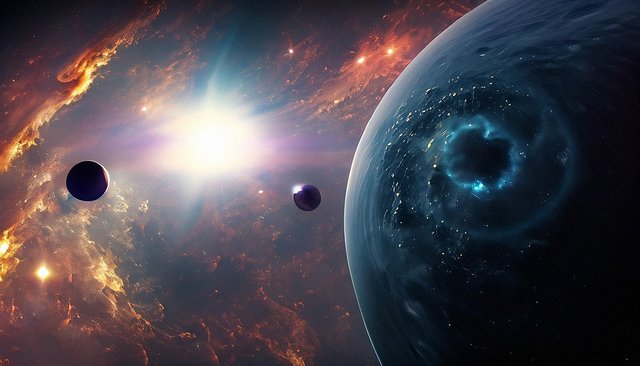The moons, the beacons of science

Pixabay
The Galaxy has a ton of moons, and each has its own unique atmosphere, Jupiter's icy moons, like Europa with its hidden ocean and Titan with its methane lakes and thick air, really make you think about what we think of as a "satellite." Some moons act like a gas station, shooting geyser-like plumes into space, which could be a sign of things happening beneath the surface that could support small life forms, others, like our moon, are like cosmic history books, showing ancient impacts and land-shaping movements that no longer happen here.
Scientific exploration of moons has been an inexhaustible source of discoveries, earth's Moon, for example, has been key to understanding the formation of the solar system. The Apollo missions not only marked a technological milestone but also brought back rocks that revealed the history of collisions, volcanism, and planetary evolution, today probes like Europa Clipper and Dragonfly are preparing to study distant moons in the hope of finding habitable conditions.
Moons are like off-world science labs, where we can test all sorts of physics the way a planet interacts with its parent planets causes things like tides, orbital dance movements, and heat in the interior, which helps us guess at what's happening in other star systems.
Moons aren't just great for science; they've also sparked a lot of cultural and philosophical thinking in many cultures, the moon is all about cycles, the unknown, the female vibe, the secret things in science, that mystery turns into a methodical curiosity, a desire to really get to the bottom of things and understand it all in the data alone. There's a kind of poetry there: the thought that a moon could have life, with the bottom of things remaining with the diameter that has to take everything into account, so it's in the data of the wood. It's a strong symbol of hope in a hard place.
Moons aren't just space rocks; they're like gateways to new things we can imagine, bringing together geology, astrology, physics, and our wildest dreams, they're like quiet observers of how galaxies change over time, and maybe even waiting to see when we might stumble upon them. They're like silent invitations to reflect on our existence in this vast cosmos, to keep exploring with a sense of wonder and respect, and respect, and respect for respect, and respect, and respect for respect, and respect.
Those moons aren't just your average space friends; they're actually super interesting and show a lot of variety in the galaxy, from our moon to distant moons like Europa, Titan, or Enceladus, they all have their own special features that show their geology, atmosphere, and even hints of things that support life. Some hidden oceans cool beneath ice, while others involve crazy volcanoes or strange chemical phenomena, making them real-life science laboratories that help us get to the surface of space.
In science, moons are very important for uncovering the solar system, past space missions have allowed us to see its makeup, how it moves, and how it has changed over time, giving us key insights into planetary formation, space successes, and perhaps even extraterrestrial life. In physics, looking at moons has helped us understand more about gravity, tides, how planets and moons dance around each other, and how they heat up from all that movement.
So moons not only illuminate the night on Earth, but they also provoke our imagination and ideas, they are like links between what we can see and what lies beneath the surface, connecting the things we know with the things we can imagine. Their scientific and physical exploration not only brings us closer to understanding the universe but also awakens a philosophical dimension: the search for meaning in the distant, curiosity as a driver of knowledge, and the certainty that even the quietest bodies can hold the deepest answers.
Bibliographic reference
Universe: The Ultimate Visual Guide by DK, 2024.
Physics for Science and Technology by Paul Allen Tipler, Gene Mosca, 2004.
General Physics by Pérez Montiel, Héctor, 2020.